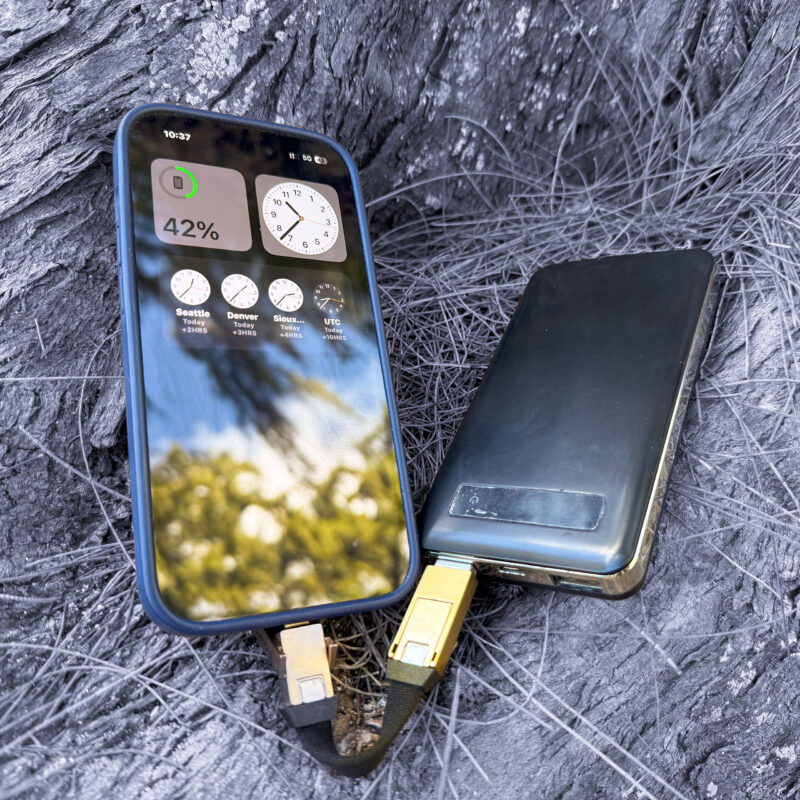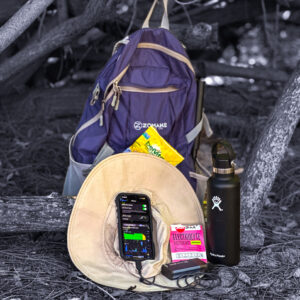Staying Connected on the Trail: Cell Phone Communication Tips for Hikers

Recommended Practices for Cell Phone Usage During Hikes
As technology continues to advance, cell phones have become indispensable tools for hikers, providing not only a means of communication but also navigation aids and emergency assistance. However, maintaining cell phone battery life during hikes, especially in areas with poor or no reception, can be challenging. Here are some recommended practices to ensure you stay connected with the hike coordinator and fellow hikers.
Using Battery Saver or Low Power Mode
Battery Saver (Android phones) and Low Power Mode (iPhones) are smartphone options to help extend battery life. Here’s how you can make the most out of it during your hike:
- Activate Battery Saver or Low Power Mode as soon as your hike begins. This will reduce background activity like mail fetch and automatic downloads.
- Dim your screen brightness and turn off notifications for non-essential apps.
- Close unnecessary apps running in the background to conserve battery power.
Power Banks: A Must-Have for Every Hiker
To ensure you never run out of battery, carrying a power bank, also known as an external battery, is highly recommended. Here’s why:
- Additional power supply: Power banks provide an extra charge for your phone, ensuring you stay connected even on longer hikes.
- Lightweight and portable: Modern power banks are designed to be lightweight and easy to carry, fitting comfortably in your backpack.
- Multiple charges: Depending on the capacity, a power bank can offer multiple charges, making it invaluable for multi-day hikes.
Managing battery life in areas with poor or no reception
Warning: Using Airplane Mode turns off your cellular signal making it very difficult to find you in an emergency.
When traversing areas with poor cell phone reception, your phone uses more power to search for a signal. Try not to use Airplane Mode, but if you have to:
- Switch to Airplane Mode to stop your phone from constantly searching for a signal, saving battery life.
- Enable Wi-Fi and Bluetooth selectively if needed for navigation devices or specific apps that function offline.
Importance of Knowing Your Phone’s Battery Behavior
Understanding how your phone’s battery behaves under different conditions is essential. Each phone model reacts differently to low power features and airplane modes and it will change as the battery ages, so:
- Familiarize yourself with your phone’s battery performance in various situations by testing it on shorter hikes.
- Monitor battery consumption patterns to predict how long your phone will last in different modes.
About Satellite Communication Capabilities
Devices that can connect to GPS satellites and send emergency and/or general-use texts include the Garmin inReach series, ACR’s Bivy Stick, and Zoleo’s Satellite Communicator. These devices have their own monthly or long-term subscription plans.
Recent and high-end cell phones feature direct satellite connectivity for emergency texting. Some can now send personal texts as well. The latest Android 14 software has satellite communication functionality for capable phones (though so far not in Hawaii). Apple’s newest iPhone OS includes general-use satellite texting for iPhone 14 or later. Read more at https://support.apple.com/en-us/101573.
Over the next few years some cell phone carriers will introduce satellite networks with cell phone antennas. This will allow existing 4G or 5G phones to connect directly to satellites which would then connect to your carrier. Keep in mind that any satellite connection requires a clear view of the sky and may not work from within a nested valley or tall forest. Also phones will use more battery power connecting to satellites than cell-tower connections.
Conclusion: Use Airplane Mode Only as a Last Resort!
Staying connected while hiking is crucial for safety and coordination with the HC and other hikers. By utilizing low power mode and having a power bank, you can ensure your phone remains a reliable tool throughout your hike and that you are findable if something should happen to you. In situations where you are running out of phone power and need power to navigate or periodically stay in touch with 911, you can then consider going to Airplane Mode. But please remember that while you are in airplane mode, no one can contact you and emergency services can no longer find you. Happy trails and stay connected!
Written by Pat Rooney, with the assistance of Sandy Akers and the HTMC Hike Safety Advisory Committee.


